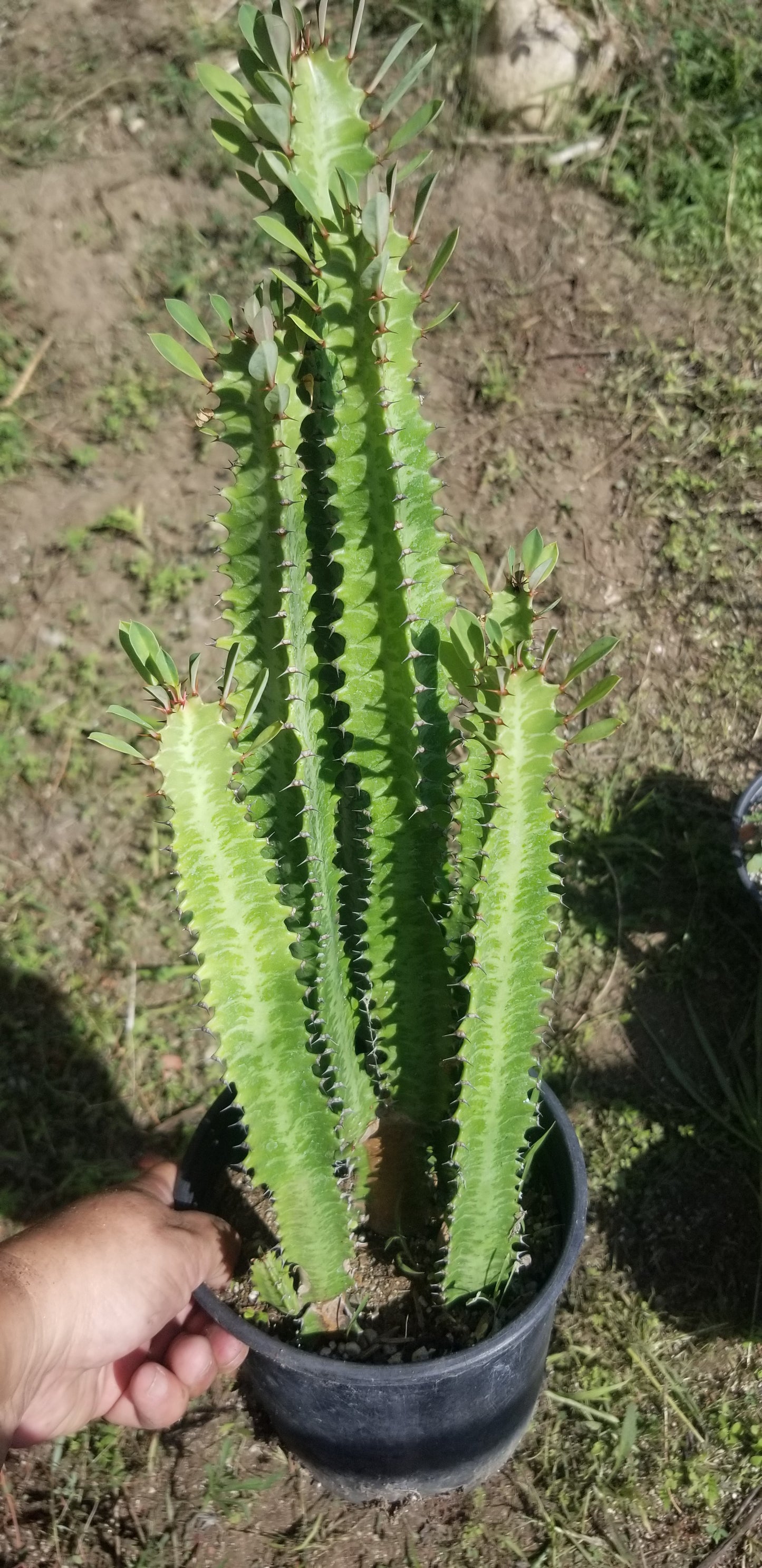Beaultiful Desert Plants
Euphorbia Trigona "African Milk Tree" (1 Gal. Pot)
Couldn't load pickup availability
Euphorbia Trigona
Euphorbia Trigona "African Milk Tree"
* Ship Bare root
* We Only Ship Priority
*Is the customer responsibility to purchase a (Heat pack) in case this plant is ship to a cold area we usually recommended if the whether is 35* or lower
Euphorbia
Scientific Name
Euphorbia trigona Mill.
Common Names
African Milk Tree, High Chaparall, Cathedral Cactus, Abyssinian Euphorbia
Synonyms
Euphorbia hermentiana
Scientific Classification
Family: Euphorbiaceae
Subfamily: Euphorbioideae
Tribe: Euphorbieae
Subtribe: Euphorbiinae
Genus: Euphorbia
Description
Euphorbia trigona is a perennial succulent up to 9 feet (2.7 m) tall. It has an upright stem that is branched into 3 or 4 sides. The stem itself is dark green with V-shaped light green patterns. The up to 0.2 inch (5 mm) long thorns are placed in pairs of 2 on the stem's ridges. The drop shaped leafs grows from between the 2 thorns on each ridge. The flowers are white or a combination of white and light yellow. They appear in spring and summer, but potted plant may not flower at all.
Hardiness:
USDA hardiness zone 10a to 11b: from 30 °F (−1.1 °C) to 50 °F (+10 °C).
How to Grow and Care
Euphorbias are very easy to care for. They require a little pampering to become established, but once they are, they are self-sufficient. In fact, more die from too much care and watering than from neglect. Euphorbias need well-draining soil and lots of sunlight. They are not particular about soil pH, but they cannot tolerant wet soil. Unlike most succulents, Euphorbia does not handle long periods of drought well. It may need weekly watering during the summer. Water whenever the soil is dry several inches below the surface. Water deeply, but don't let them sit in wet soil, which can cause root rot. Add some organic matter or fertilizer to the planting hole. If you are growing them in containers or your soil is poor, feed with a half-strength fertilizer monthly.
Euphorbia can be grown from seed, but they can be difficult to germinate (or even find). It is usually propagated by cuttings. This can be tricky, because of the exuding sap. Rooting hormone is recommended with Euphorbias. They tend to grow problem free, but there are a few pests and diseases to be alert for.
Share






Subscribe to our emails
Be the first to know about new collections and exclusive offers.






